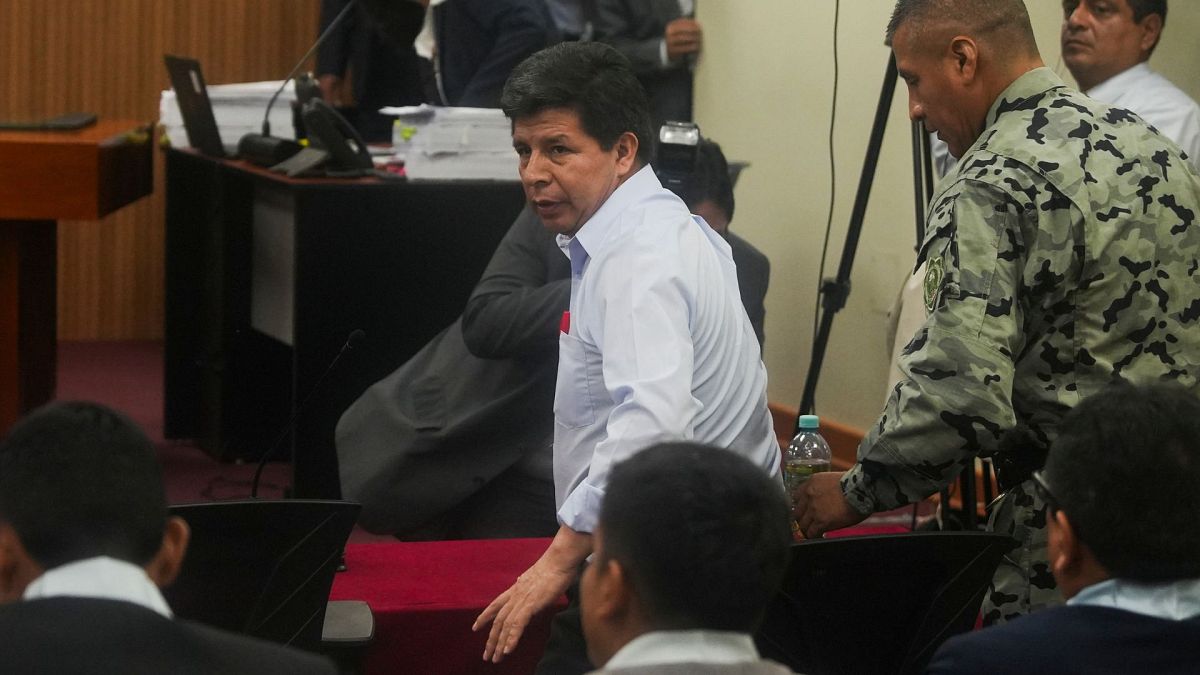Asylum for Afghan women might not be so straightforward
Activists fear EU governments will come under pressure from the populist right and mull third country repatriation.
Anchal Vohra is a Brussels-based international affairs commentator.
Sayed Mohammad Akbar Agha, a stout man with a big black turban, sat on a thin mattress in his living room in Kabul, two armed men guarding his sprawling mansion. It was 2016, and Agha — a Taliban leader imprisoned for abducting three U.N. officials — had been pardoned by then Afghan President Hamid Karzai and turned into a peace negotiator.
“We will allow the girls to study and women to work,” he told me in Urdu. “First, the Americans need to leave.”
And they did. The Americans and European allies evacuated in 2021, and for a time, the Taliban projected a less regressive return to power. But the charade was short-lived, and soon enough, it banned girls from attending secondary school and university, barred women from nearly all professions and restricted their movement. Finally, two months ago, it outlawed Afghan girls and women from speaking in public.
Cutting their losses and leaving the country without any assurances for Afghan girls and women, Western allies are yet to come up with a coherent response to the gender apartheid undertaken by the Taliban. And it has left many activists wondering if the West ever really cared.
Yet, amid this grim reality, a landmark ruling from the Court of Justice of the European Union (CJEU) seems to offer some reprieve to the Afghan women who somehow manage to reach the EU and seek asylum. Stating that cumulative discriminatory measures under the Taliban count as persecution, the October ruling makes Afghan women and girls eligible for asylum in Europe based solely on their nationality and gender.
But as the EU moves away from its value system, particularly on immigration, the question is whether the bloc’s countries will actually offer asylum to every Afghan woman — or ship them elsewhere.
According to Stavros Papageorgopoulos, acting head of legal support and litigation at the European Council of Refugees and Exiles (ECRE), any Afghan woman who applies for asylum anywhere in the EU must now receive it. The ruling is expected to make the process much easier, and some analysts believe that those with rejected applications could now be able to seek protection, while those applying for the first time needn’t prove harassment.
Normally, an important element in assessing individual asylum cases is the evidence proving whether an applicant was individually affected or targeted — evidence that is often difficult to obtain, Papageorgopoulos explained. But the new ruling clarifies that the oppression of Afghan women is so severe that it amounts to persecution in and of itself.
“There is, therefore, no need to conduct a further individualized assessment of the situation of each applicant,” he said. “This evidently makes the process to receive refugee status more straightforward, so it has great practical impact.”
Even before this ruling, some European countries — such as Finland, Sweden, Denmark and Switzerland — had already adopted the ECRE’s January 2023 guidelines for asylum, deciding to grant protection to all Afghan women and girls.
But as the populist right surges in elections, compelling the center right toward anti-immigrant policies, there are growing concerns that these guidelines could be abandoned and the court ruling navigated through other provisions, such as repatriation to third countries outside the EU.
Some conservatives are already arguing against the policy, saying it’s a huge pull factor that could open the floodgates and invite more Afghans, who are already among the top asylum seekers in Europe.

For example, Gregor Rutz from the right-wing Swiss People’s Party recently tabled a motion to reverse the policy in Switzerland, claiming it had led to an increase in arrivals. Pointing to data from February 2024, when Afghans made up 52 percent of all new applications, “these figures speak for themselves,” Rutz said.
But according to activists in countries where the policy predates the ruling, these are unfounded fears. “If you are an Afghan woman, how can you get out of Afghanistan when you can’t get out of your home without a male guardian?” asked Gérard Sadik, the head of asylum issues at French NGO La Cimade.
“If you succeed and escape, you arrive in neighboring countries. But then you have to make the tough passage to Europe through mountains and smuggling routes — that’s very dangerous and very difficult. Women are more vulnerable, so they rarely travel on foot. The majority of Afghans who come to the EU are men,” he said. It’s mostly Afghan men who undertake the treacherous journeys to Europe, and men who wait years to seek family reunification with their wives and children.
Activists also point out that the data of a single month doesn’t indicate that the decision to grant asylum to Afghan women and girls led to an increase in overall numbers. In Switzerland in particular, fewer women applied for asylum after the policy was adopted than before — just over 700 in 2023 compared to 809 in 2022.
Lionel Walter, a spokesperson for the Swiss Refugee Council, similarly said he could safely deny the existence of any pull factor so far. “The vast majority of Afghan women in exile are already with their families. Few, if any, ever travel alone,” he said. Additionally, “two-thirds of those who applied between October 2022 and September 2023 were single” and couldn’t claim a right to family reunification.
The ruling also only applies to Afghan women and girls who are physically present in an EU nation — not to those in a third country, such as Iran or Pakistan.
Moreover, other provisions like the Dublin Regulation, which determines the EU country where an asylum request should be processed, guard against secondary migration, Eva Singer of the Danish Refugee Council said. If the authorities found out that an Afghan woman already sought asylum in an EU nation, for example, “they would be returned according to Dublin rules.”
However, in mid-October, European Commission President Ursula von der Leyen wrote a letter to the bloc’s national leaders, asking them to explore “return hubs,” citing Italy’s deal with Albania as a model. And this has called many things into question. According to Dr. Alema Alema of German NGO ProAsyl, as the EU strengthens border controls under the Common European Asylum System (CEAS), “reforms could change the practice of granting asylum to Afghan women.”
Overall, there’s no denying that the number of Afghan asylum seekers have gone up as conflict has gripped their country and NATO allies left the reins to the Taliban. But with the oppression they’re under, Afghan women perhaps make clearest case for protection. And yet, activists now fear European governments will come under pressure from the populist right and mull third country repatriation for all asylum seekers — including Afghan women.
What's Your Reaction?















































